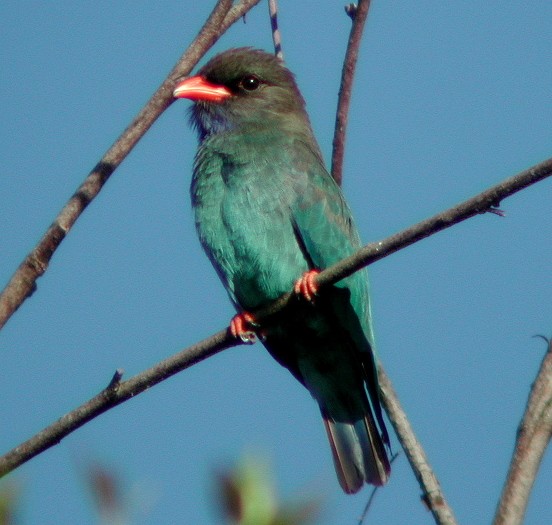Oriental Dollarbird
A species of Broad-billed Rollers and Dollarbirds, Also known as Asian Dollarbird Scientific name : Eurystomus orientalis Genus : Broad-billed Rollers and Dollarbirds
Oriental Dollarbird, A species of Broad-billed Rollers and Dollarbirds
Also known as:
Asian Dollarbird
Botanical name: Eurystomus orientalis
Genus: Broad-billed Rollers and Dollarbirds
Content
Description People often ask General Info
 Photo By Aviceda , used under CC-BY-SA-3.0 /Cropped and compressed from original
Photo By Aviceda , used under CC-BY-SA-3.0 /Cropped and compressed from original Description
The oriental dollarbird has a length of up to 30 cm. It is dark brown but this is heavily washed with a bluish-green sheen on the back and wing coverts. Its belly and undertail coverts are light coloured, and it has glossy bright blue colouring on its throat and undertail. Its flight feathers are a darker blue. Its bill is short and wide and in mature animals is coloured orange-red with a black tip. It has very light blue patches on the outer parts of its wings which are highly visible in flight and for which it is named. The females are slightly duller than the males but overall the two are very similar. Immature birds are much duller than the adults and do not have the blue colouring on their throats. They also have brown bills and feet instead of the red of the adults. 
Size
27-32 cm (10.6-12.6 in)
Colors
Brown
Green
Gray
Blue
Nest Placement
Cavity
Feeding Habits
Oriental Dollarbird predominantly feeds on insects such as mantids, locusts, moths, cicadas, and beetles, including occasional lizards. It employs aerial hunting techniques, often catching prey mid-flight. Oriental Dollarbird showcases unique adaptations for this feeding strategy.
Habitat
Oriental Dollarbird thrives in a variety of woodland environments, predominantly inhabiting primary lowland rainforest canopies, riparian woods, and secondary growth areas with dense vegetation. They are well-adapted to forest clearings and both broadleaf and coniferous trees, including those in mountainous and swamp-forested regions. Additionally, oriental Dollarbird resides in human-modified landscapes such as agricultural areas with scattered trees, parks, and large gardens, generally at elevations below 800 meters.
Dite type
Omnivorous
People often ask
General Info
Feeding Habits
Bird food type
Behavior
The oriental dollarbird is most commonly seen singly with a distinctive upright silhouette on a bare branch high in a tree, from which it hawks for insects, returning to the same perch after a few seconds. 
Distribution Area
The oriental dollarbird is found from Australia to Japan and India. It breeds in northern and eastern Australia between the months of September and April and winters in New Guinea and nearby islands. The birds prefer open wooded areas with hollow-bearing trees to build nests in. 
Species Status
Not globally threatened.